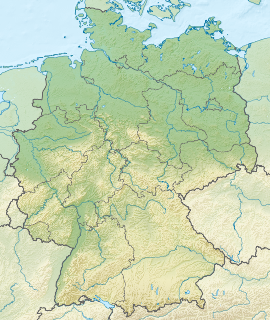 W
WThe Ahbach Formation is a geologic formation in Germany. It preserves fossils dating back to the Middle Devonian period.
 W
WThe Alcobaça Formation, previously known as the Guimarota Formation, is a geological formation in Portugal. It dates back to the Oxfordian stage of the Late Jurassic. It is an important source of information on the diversity of Late Jurassic mammals. Many of the fossils were collected from the now disused and flooded Camadas de Guimarota coal mine.
 W
WThe Aoufous Formation is a geological formation that contains some of the vertebrate assemblage of the Kem Kem Group, of Late Cretaceous date. Two other formations comprise the Kem Kem beds: the underlying Ifezouane Formation and the overlying Akrabou Formation.
 W
WThe Bemaraha Formation is a Middle Jurassic geological formation of the Morondava Basin of Madagascar. The lime mudstones, grainstones and limestones of the formation were deposited in lagoonal and reefal environments. Fossils of groups of invertebrates and theropod and sauropod tracks have been found in the formation. The Sahalaly River tracksite yielded a single trackway belonging to a quadrupedal dinosaur, possibly a sauropod. Sauropod tracks are rare, making up as little as 1 percent of the present sample. The best-preserved tracks are assigned to the ichnogenus Kayentapus.
 W
WThe Bertie Formation, also called Bertie Limestone and Bertie Dolomite, formerly named as Bertie Group, is a Late Silurian geologic formation and Lagerstätte in southern Ontario, Canada and western New York State, United States. The formation comprises dolomites, limestones and shales and reaches a thickness of 495 feet (151 m) in the subsurface, while in outcrop the formation can be 60 feet (18 m) thick.
 W
WThe Besano Formation is a geological formation in the southern Alps of northwestern Italy and southern Switzerland. This formation, a short but fossiliferous succession of dolomite and black shale, is famous for its preservation of Middle Triassic marine life including fish and aquatic reptiles. It is exposed in the vicinity of Monte San Giorgio and is among the formations responsible for the area being designated as a UNESCO World Heritage Site.
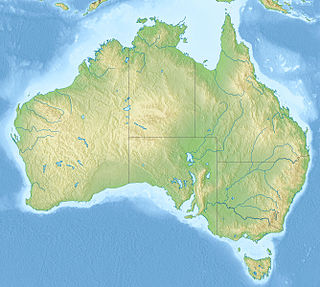 W
WThe Broome Sandstone is an Early Cretaceous geologic formation found in Western Australia, and formerly considered part of Dampier Group. Fossil stegosaur tracks belonging to the ichnogenus and species Garbina roeorum have been reported from the formation.
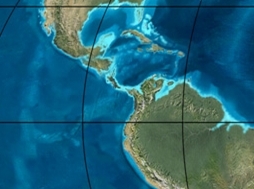 W
WThe Castillo Formation is an Early Miocene geologic formation in the Falcón Basin of Venezuela. The formation unconformably overlies the Matatere, Misoa, El Paují and Jarillal Formations. The Castillo Formation is overlain by Quaternary alluvium and in places by the Capadare Formation. The formation, deposited in a calm near-shore lagoonal brackish environment, with possibly fluvial influence, has provided a rich assemblage of fossil crocodylians, turtles, giant sloths and various types of fish.
 W
WThe Culebra Formation (Tcb) is a geologic formation in Panama. It preserves fossils dating back to the Miocene period; Early Miocene epoch, Aquitanian to Burdigalian stages. Fossils of Culebrasuchus have been found in and named after the formation. The thickness of the formation is at least 250 metres (820 ft) thick, and the age has been estimated as from 23 to 19 Ma.
 W
WThe Forni Dolostone, also known as the Dolomia di Forni, is a Late Triassic dolomite geological formation in northeastern Italy. The formation was deposited in a lagoonal to shallow marine environment.
 W
WThe Guanling Formation is a Middle Triassic geologic formation in southwestern China. The formation encompasses two members. The first member is primarily calcareous mudstone and dolomite, indicative of a coastal environment. The second member is a thicker marine sequence of dark micritic limestone with some dolomite. Two distinct fossil assemblages are found in the second member. The older Luoping biota preserves abundant arthropods along with fossils from other invertebrates and vertebrates, which are rare but well-preserved. The slightly younger Panxian fauna has a more diverse and common assortment of marine reptiles such as sauropterygians.
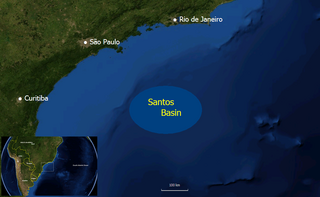 W
WThe Guarujá Formation is a geological formation of the Santos Basin offshore of the Brazilian states of Rio de Janeiro, São Paulo, Paraná and Santa Catarina. The predominantly calcarenite formation with marls dates to the Early Cretaceous period; Early Albian epoch and has a maximum thickness of 2,500 metres (8,200 ft). The formation is the second-most important post-salt reservoir rock of the Santos Basin.
 W
WThe Imías Formation is a geologic formation in Cuba. It preserves fossils dating back to the Miocene period.
 W
WThe Jydegaard Formation is a geological formation dating to the Early Cretaceous, about 145-139 million years ago. It is on the island of Bornholm, Denmark. Vertebrate fossils have been found in the formation.
 W
WThe Kandreho Formation is an Early Jurassic geological formation of the Mahajanga Basin of Madagascar. The marly limestones of the formation were deposited in a subtidal lagoonal environment. The formation overlies the Bouleiceras and Spiriferina beds of the early Toarcian and has been correlated to the Marrat Formation of Saudi Arabia. Fossils of the marine crocodylian Andrianavoay as well as bivalves and the ammonite Nejdia have been found in the formation. The name Kandreho Formation was proposed by Geiger in 2004.
 W
WThe Kilmaluag Formation is a Middle Jurassic geologic formation in Scotland. It was formerly known as the Ostracod Limestone for the abundance of fossil freshwater ostracods within it. The Kilmaluag Formation is very fossiliferous, with ostracods, gastropods, bivalves, trace fossil burrows, and vertebrate fossil remains. Vertebrate fossils include fish, crocodilomorphs, mammals, small reptiles, amphibians and some large reptile remains including dinosaurs and pterosaurs.
 W
WThe Kota Formation is a geological formation in India. The precise age of Kota Formation are uncertain, but it dates from the Early to Middle Jurassic, and is split into a Lower Member and Upper Member. The lower member is thought to be Hettangian-Pliensbachian. While the upper unit is thought to be Toarcian, but may possibly extend into the Aalenian. It conformably overlies the Dharmaram Formation which is Late Triassic to earliest Jurassic and is unconformably overlain by the Early Cretaceous Gangapur Formation. The lower member is approximately 100 m thick while the upper member is 490 m thick. Both subunits primarily consist of mudstone and sandstone, but near the base of the upper unit there is a 20-30 metre thick succession of limestone deposited in a freshwater setting.
 W
WThe Kurek Formation is a late Oxfordian geologic formation of the Kugitang Svita in Turkmenistan and Uzbekistan. Fossil sauropod tracks have been reported from the formation.
 W
WThe La Meseta Formation is a sedimentary sequence deposited during the Eocene. The formation is found on Seymour Island, Antarctica.
 W
WThe Lagunitas Formation is a geologic formation in Cuba. The open marine, fluvio-deltaic and lagoonal claystones, limestones and conglomerates preserve fossils dating back to the Early Miocene period. Among others, the fossil primate Paralouatta marianae, the largest primate of the Miocene New World, was found in the formation. Based on microfossils, the age has been determined as Burdigalian.
 W
WThe Lameta Formation, also known as the Infratrappean Beds is a sedimentary rock formation found in Madhya Pradesh, Gujarat, and Maharashtra, India. It is of Maastrichtian age, and is notable for its dinosaur fossils. Many dubious names have been created for isolated bones, but several genera of dinosaurs from these rocks are well-supported, including the titanosaur sauropod Isisaurus and the abelisaurs Indosaurus, Indosuchus, Laevisuchus, and Rajasaurus. As well as mammals, snakes and other fossils.
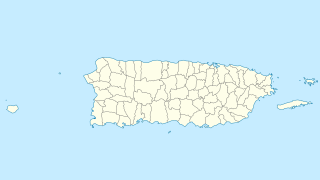 W
WThe Lares Limestone is a geologic formation in Puerto Rico. It preserves fossils dating back to the Late Oligocene to Early Miocene period.
 W
WThe Mangrullo Formation is an Early Permian (Artinskian) fossiliferous geological formation in northeastern Uruguay. Some authors alternatively group it together with the Paso Aguiar Formation and the Fraile Muerto Formation as the three subdivisions of the Melo Formation, in which case it is referred to as the Mangrullo Member. Like the correlated formations of Irati and Whitehill, it is known for its abundant mesosaur fossils. It also contains the oldest known Konservat-Lagerstätte in South America, as well as the oldest known fossils of amniote embryos.
 W
WThe Mishash Formation is a Late Cretaceous (Campanian-Maastrichtian) geologic formation in Israel. The formation is correlated with the Duwi Formation of Egypt and the Amman and Ruseifa Formations of Jordan. Mosasaur fossils assigned to Prognathodon currii and pterosaur fossils have been recovered from the formation.
 W
WThe Mount Hope Formation is a geologic formation of the Caribbean mouth of the Panama Canal Zone in Panama. The limestones, mudstones and siltstones preserve bivalve, gastropod and crustacean fossils dating to the Early Pleistocene. The formation is named after Mount Hope Cemetery, the burial ground for black West Indian immigrants who died working on the intercontinental Panama Railroad at the Panama Canal for the American Panamanian Railroad Corporation between 1850 and 1855.
 W
WThe Pisco Formation is a geologic formation located in Peru, on the southern coastal desert of Ica and Arequipa. The approximately 640 metres (2,100 ft) thick formation was deposited in the Pisco Basin, spanning an age from the Middle Miocene up to the Early Pleistocene, roughly from 15 to 2 Ma. The tuffaceous sandstones, diatomaceous siltstones, conglomerates and dolomites were deposited in a lagoonal to near-shore environment, in bays similar to other Pacific South American formations as the Bahía Inglesa and Coquimbo Formations of Chile.
 W
WThe Plainview Formation is a Early Cretaceous (Albian) geologic formation of the Dakota Group in Colorado. Fossil ankylosaur tracks and tracks of Caririchnium sp. have been reported from the formation.
 W
WThe Przysucha Formation is a geologic formation in Poland. Ichnofossils attributed to dinosaurs have been found in the formation.
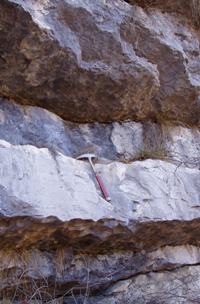 W
WThe Rotzo Formation is a geological formation in Italy, dating to roughly between 189 and 183 million years ago and covering the Pliensbachian stage of the Jurassic Period in the Mesozoic Era. Has been traditionally classified as a Sinemurian-Pliensbachian Formation, but a large and detailed dataset of isotopic 13C and 87Sr/86Sr data, estimated the Rotzo Formation to span only over the whole Pliensbachian.
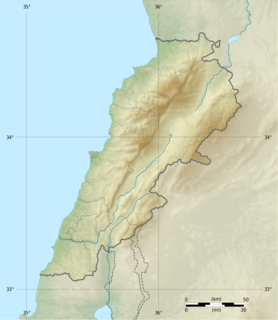 W
WThe Sannine Formation also called the Sannine Limestone is a Cretaceous geologic formation in Lebanon.
 W
WThe Sierra Madre Formation is a geologic formation in Chiapas state, southern Mexico. It consists of marine dolomites and limestones. The formation dates to the Middle Cretaceous, spanning from the Aptian of the Early to the Cenomanian of the Late Cretaceous.
 W
WThe Solnhofen Plattenkalk, or Solnhofen Limestone, geologically known as the Altmühltal Formation, is a Jurassic Konservat-Lagerstätte that preserves a rare assemblage of fossilized organisms, including highly detailed imprints of soft bodied organisms such as sea jellies. The most familiar fossils of the Solnhofen Plattenkalk include the early feathered theropod dinosaur Archaeopteryx preserved in such detail that they are among the most famous and most beautiful fossils in the world. The Solnhofen beds lie in the German state of Bavaria (Bayern), halfway between Nuremberg (Nürnberg) and Munich (München) and were originally quarried as a source of lithographic limestone. The Jura Museum situated in Eichstätt, Germany has an extensive exhibit of Jurassic fossils from the quarries of Solnhofen and surroundings, including marine reptiles, pterosaurs, and one specimen of the early bird Archaeopteryx.
 W
WThe Stuttgart Formation is a geologic formation in Germany. It preserves fossils dating back to the Carnian stage of the Triassic period.
 W
WThe Tendaguru Formation, or Tendaguru Beds are a highly fossiliferous formation and Lagerstätte in southeastern Tanzania. The formation represents the oldest sedimentary unit of the Mandawa Basin, overlying Neoproterozoic basement, separating by a long hiatus and unconformity. The formation reaches a total sedimentary thickness of more than 110 metres (360 ft). The formation ranges in age from the late Middle Jurassic to the early Early Cretaceous, Oxfordian to Hauterivian stages, with the base of the formation possibly extending into the Callovian.
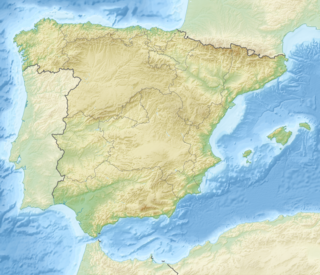 W
WThe Tereñes Formation or Tereñes Marl is a Late Jurassic (Kimmeridgian) geologic formation in Asturias, Spain. The grey marls of the formation were deposited in a lagoonal environment at a muddy coast along a temporary inland sea. The lower section of the formation comprises silty and chalky sandstones with desiccation cracks and ripple marks, then becomes a bituminous, prominently ostracod-bearing, pelecypod shell chalk, lime chalk marl and marl. Fossil sauropod tracks have been reported from the formation.
 W
WThe Toolebuc Formation is a geological formation that extends from Queensland across South Australia and the Northern Territory in Australia, whose strata date back to the Albian stage of the Early Cretaceous. Dinosaurs, pterosaurs, plesiosaurs, ichthyosaurs, protostegid turtles, sharks, chimaeroids and bony fish remains are among the fossils that have been recovered from the formation.
 W
WThe Torleite Formation is a geologic formation and Lagerstätte in Germany. It preserves fossils dating back to the Kimmeridgian stage of the Jurassic period. examples of animals that lived in the formation include the a small primitive megalosaurid theropod dinosaur known as Sciurumimus and the extinct bony fish Anaethalion.
 W
WThe Vectis Formation is a geological formation on the Isle of Wight and Swanage, England whose strata were formed in the lowermost Aptian, approximately 125 million years ago. The environment of deposition was that of a freshwater coastal lagoon with occasional marine influence after the early Aptian marine transgression, transitioning from the floodplain environment of the underlying Wessex Formation. The primary lithology is of laminated grey mudstones. The Vectis Formation is composed of three geological members: the Shepherds Chine member, the Barnes High Sandstone member, and the Cowleaze Chine member. It is overlain by the fully marine Atherfield Clay Formation, part of the Lower Greensand Group. Dinosaur remains are among the fossils that have been recovered from the formation.
 W
WThe Yanigua Formation is a geologic formation in Dominican Republic. The lagoonal claystones and marls preserve fossils dating back to the Miocene period. The formation hosts Dominican amber.